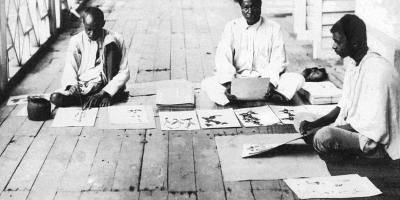16 novembre 2020 - 17 h 30 min - 18 h 30 min

This paper will examine a central function of colonial botanical gardens in the late 19th century : the production, circulation and conservation of botanical objects. Much has been written about the difficult circulation of living plants, which were often sent from one botanic garden to another for acclimatization. However, the conditions under which plants were turned into dried specimens, which in turn were used to produce official botanical knowledge, has been less studied. Through the case study of the Calcutta botanic garden, I will show that the transformation of plants into objects served the colonial appropriation and legitimation of local botanical knowledge. The logistics of plant production and conservation were far from secondary to the colonial project; they played an important part in the broader imperial system of paper and information management that underpinned the British Raj in the 19th century.
Marine Bellégo has recently joined the LARCA as MCF (lecturer). She specializes in history of science, environmental studies, material culture and Indian history. She is currently preparing a book about the history of the Calcutta Botanic Garden in the 19th century.


